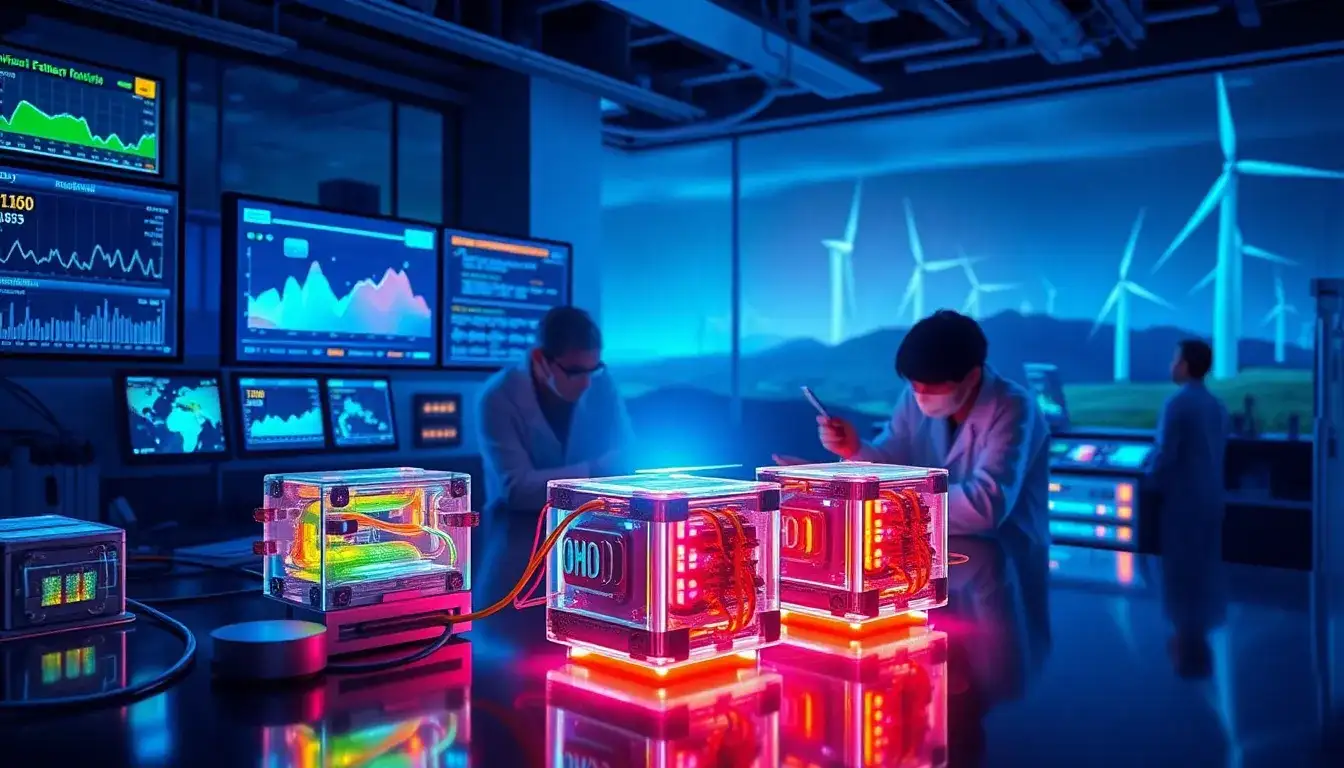
Researchers at the Pacific Northwest National Laboratory (PNNL), a prominent facility under the U.S. Department of Energy, have introduced a groundbreaking method for energy storage that could significantly speed up the emergence of new flow battery technologies. This innovation is part of a broader initiative to improve energy storage systems, which are essential for effectively incorporating renewable energy sources into the grid.
The team has developed a miniaturized flow battery design that requires substantially less starting material while delivering performance metrics that rival those of traditional lab-scale flow battery systems. Conventional flow batteries, known for their ability to store energy from intermittent renewable sources, typically consist of large-scale systems. They offer flexible energy scaling and the capability to discharge energy on demand, making them highly suitable for grid applications. However, their considerable size and high material costs have historically hindered rapid advancements in this field.
The recent miniaturization effort by PNNL researchers aims to address these challenges and simplify the testing of new battery materials. In an article published in the Journal of The Electrochemical Society, the team details their newly designed compact flow battery test system, which scales down the traditional flow battery design by a factor of five. This mini flow cell replicates the internal architecture of its larger counterpart while significantly reducing the amount of precursor materials needed for research. With only milligrams of material required for testing, researchers can now swiftly assess the potential of new compositions, paving the way for improved energy storage solutions.
The miniaturized flow cell design is regarded as a critical innovation. Ruozhu Feng, a lead author of the study and an esteemed flow battery scientist at PNNL, states that this research marks the beginning of integrating artificial intelligence and robotics to further automate and expedite the testing process for flow battery designs. Such advancements could revolutionize energy storage research by allowing for the rapid validation of a wider array of experimental chemistries.
Notably, the mini flow cell design does not compromise performance. The testing system has demonstrated that rigorous validation of material stability can be achieved despite its compact size. This model has been specifically tailored for research laboratories eager to conduct quick screenings of new battery materials, streamlining workflows involved in materials discovery and testing. However, it is essential that the starting materials used are of high purity to prevent any blockage in the system’s narrow channels.
To safeguard their intellectual property, the PNNL research team is applying for U.S. patent protection for the mini flow cell design. This strategic move aligns with PNNL’s overarching goal of fostering collaboration and technology licensing, inviting partnerships with other research entities and commercial players interested in this cutting-edge energy storage technology. The lab hopes that these advancements will lead to commercially viable solutions for energy storage applications.
The strength of this research endeavor is highlighted by the team’s collective expertise, which includes engineers and chemists whose diverse skills converge to create effective energy storage solutions. Soowhan Kim, a lead researcher and designer of the mini flow cell, emphasizes that their collaborative experience encompasses over a decade of work in various aspects of flow battery design. As cells transition from small to large, maintaining accuracy and reliability without requiring excessive amounts of chemical materials is vital.
Flow batteries are particularly appealing because they utilize liquid electrolytes that can be stored in external tanks, allowing for flexible scaling concerning energy capacity. This characteristic makes them well-suited for large-scale energy storage challenges, such as integrating wind and solar energy into utility grids. However, the search for new chemical combinations that can optimize efficiency, reduce costs, and ensure sustainable sourcing of materials is crucial for enhancing the viability of flow battery systems.
Historically, discovering new flow battery materials has been a labor-intensive process, often marked by time-consuming trial-and-error frameworks that require substantial quantities of materials. With the new miniaturized testing apparatus, this paradigm is evolving. The new design, comparable in size to a playing card, minimizes material usage to just a few grains of sand, enabling a significant reduction in both the time and resources spent on testing phases while still yielding robust results.
As momentum builds around the energy storage research at PNNL, collaboration extends beyond the laboratory. With support from the Energy Storage Research Alliance, a consortium of leading experts from national laboratories and academic institutions, there is a shared vision to advance battery technology that will shape future energy systems. Researchers involved in this initiative are optimistic that the momentum gained from this innovative work will inspire further developments in the field of energy storage.
In summary, the pioneering work of the PNNL team in miniaturizing flow batteries represents a crucial turning point in energy storage technology. By accelerating the validation of new materials and minimizing the required raw materials, this innovation holds the potential to ignite the next wave of breakthroughs in renewable energy systems. With ongoing advancements in this field, the future of energy storage looks promising, paving the way for solutions to many of today’s pressing energy challenges.
Original article by NenPower, If reposted, please credit the source: https://nenpower.com/blog/breakthroughs-in-mini-flow-battery-technology-propel-advances-in-energy-storage-solutions/


